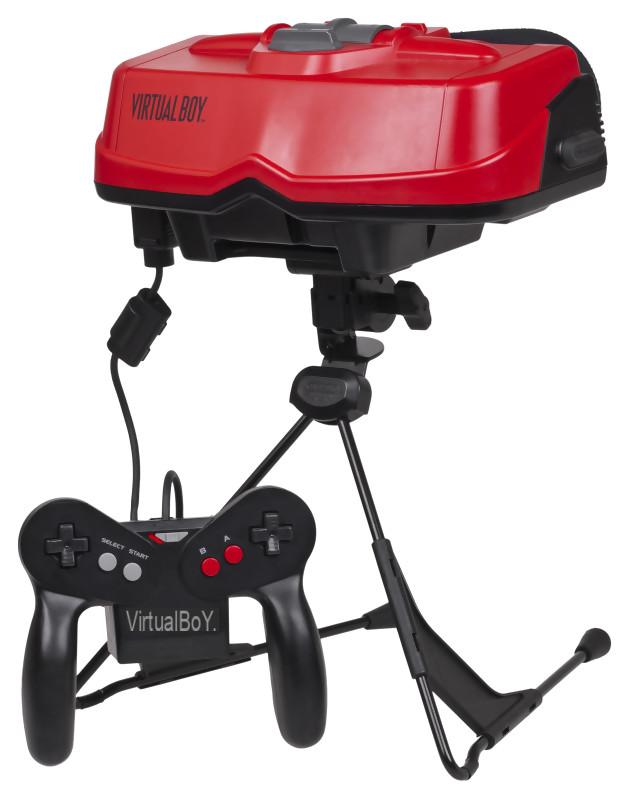 We would tend to forget it, but this is not the first time that Nintendo has tried VR. Indeed, the Japanese firm attempted a first foray with the Virtual Boy, in 1995; it was a bitter failure, probably the worst in its history. A trauma that still haunts the nights of the leaders if we are to believe the revelations of the Nikkei, the Japanese media ensuring that Big N has been working intensively on virtual reality for four years, but that the quality of the PlayStation VR has made it clear that his development experiments were nothing new. To avoid any direct comparison with the helmets already available on the market, we can therefore legitimately assume that Nintendo was waiting for a frame with a clear message. This is exactly what the Nintendo Labo offers him: given the device, we know from the outset that we will not obtain the same result as on PS4. To establish a more relevant parallel, it is rather necessary to look at the side of Google Cardboard which uses the same concept, that is to say sliding a smartphone in front of two lenses; but where you can get away with it for only €5 with the Mountain View company, Nintendo asks to release €29,99 for the basic VR kit (lenses + barrel) and around twenty euros for the objects additional items (camera, wind pedal, elephant, bird). Naturally, there is a complete pack whose price (80€) corresponds to the total amount of the kits if purchased separately. It may seem trivial, but not being penalized when we choose to obtain the different elements at our own pace is rare enough to be underlined.
We would tend to forget it, but this is not the first time that Nintendo has tried VR. Indeed, the Japanese firm attempted a first foray with the Virtual Boy, in 1995; it was a bitter failure, probably the worst in its history. A trauma that still haunts the nights of the leaders if we are to believe the revelations of the Nikkei, the Japanese media ensuring that Big N has been working intensively on virtual reality for four years, but that the quality of the PlayStation VR has made it clear that his development experiments were nothing new. To avoid any direct comparison with the helmets already available on the market, we can therefore legitimately assume that Nintendo was waiting for a frame with a clear message. This is exactly what the Nintendo Labo offers him: given the device, we know from the outset that we will not obtain the same result as on PS4. To establish a more relevant parallel, it is rather necessary to look at the side of Google Cardboard which uses the same concept, that is to say sliding a smartphone in front of two lenses; but where you can get away with it for only €5 with the Mountain View company, Nintendo asks to release €29,99 for the basic VR kit (lenses + barrel) and around twenty euros for the objects additional items (camera, wind pedal, elephant, bird). Naturally, there is a complete pack whose price (80€) corresponds to the total amount of the kits if purchased separately. It may seem trivial, but not being penalized when we choose to obtain the different elements at our own pace is rare enough to be underlined.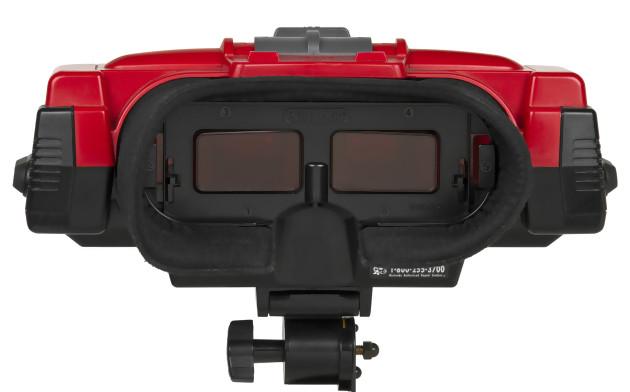
We would tend to forget it, but this is not the first time that Nintendo has tried VR. Indeed, the Japanese firm attempted a first foray with the Virtual Boy, in 1995; it was a bitter failure, probably the worst in its history.
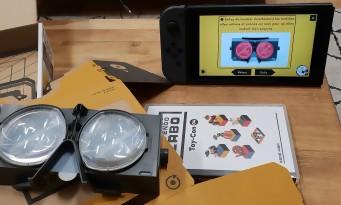 Once the box is opened, we find what makes the charm of the Nintendo Labo, namely correctly identified cardboard boards, easy-to-detach elements, and ultra-clear explanations. Everything is dissected down to the smallest detail (thanks to the touch screen of the console, you can zoom in on the elements and rotate them in all directions), and in the event of a missed step, there is always a way to come back backward. If we take pleasure in assembling the Toy-Con ourselves and playing with them, it is also because their handling is comfortable. Rather robust, they do not yield from the first sudden movement; everything has been perfectly studied for the little blond heads. We can confirm that we went free with the blaster, and the rubber bands are still in place. At worst, you can go through the PDF patterns generously offered by Nintendo at this address. A free solution, of course, but which still involves using a cardboard box at the top and a printer that conforms to the dimensions of the boards. Otherwise, the store is supposed to offer official replacement modules as is the case for other kits, but nothing for the Nintendo Labo VR at the time of writing these lines. After installing the lenses in their case (between 30 and 45 minutes), we find that the assembly is devoid of strap unlike other helmets. To be honest, we don't know why the Japanese manufacturer decided to do without the strap when it greatly promotes immersion, not to mention the fact that in the long run, holding the console at arm's length generates a lot of fatigue. . Luckily, Sweat Proof Gaming has designed a strap that costs $14, but that requires getting the wallet out again.
Once the box is opened, we find what makes the charm of the Nintendo Labo, namely correctly identified cardboard boards, easy-to-detach elements, and ultra-clear explanations. Everything is dissected down to the smallest detail (thanks to the touch screen of the console, you can zoom in on the elements and rotate them in all directions), and in the event of a missed step, there is always a way to come back backward. If we take pleasure in assembling the Toy-Con ourselves and playing with them, it is also because their handling is comfortable. Rather robust, they do not yield from the first sudden movement; everything has been perfectly studied for the little blond heads. We can confirm that we went free with the blaster, and the rubber bands are still in place. At worst, you can go through the PDF patterns generously offered by Nintendo at this address. A free solution, of course, but which still involves using a cardboard box at the top and a printer that conforms to the dimensions of the boards. Otherwise, the store is supposed to offer official replacement modules as is the case for other kits, but nothing for the Nintendo Labo VR at the time of writing these lines. After installing the lenses in their case (between 30 and 45 minutes), we find that the assembly is devoid of strap unlike other helmets. To be honest, we don't know why the Japanese manufacturer decided to do without the strap when it greatly promotes immersion, not to mention the fact that in the long run, holding the console at arm's length generates a lot of fatigue. . Luckily, Sweat Proof Gaming has designed a strap that costs $14, but that requires getting the wallet out again.
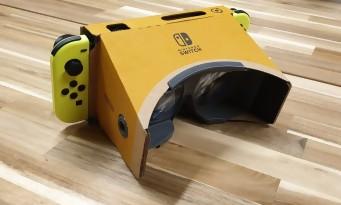 During the first contact with the Nintendo Labo VR, we must be content to control a remote-controlled car, to shoot a basket, to explore a kitchen, to burst balloons by blowing on a windmill, or even to try to reach the top of a building dodging obstacles. In short, it's not madness, only the Alien Invasion with the blaster having managed to give us fun. And then, it must be admitted that the 720p 60Hz of the Switch does not make it possible to perform miracles in terms of visual rendering. Zero texture, it aliases to death, and the persistent blur ends up tiring the eyes. The most ridiculous thing is when you have to hold the VR mask with one hand and wave the Joy-Con with the other; with strawberry motion recognition, it's pure torture. Since virtual reality is not recommended for children under 7 years old, it is possible to deactivate it via the options by thinking, of course, of removing the console from the mask. Let's be clear: in 2D, the game continues to be displayed on the screen of the machine and not on the television. For example, in terms of the barrel, we end up with a system identical to that of the motorcycle and its handlebars. In theory, the location where the screen is located is thought to avoid any accidental fall, but it is still preferable to avoid movements that are a little too violent.
During the first contact with the Nintendo Labo VR, we must be content to control a remote-controlled car, to shoot a basket, to explore a kitchen, to burst balloons by blowing on a windmill, or even to try to reach the top of a building dodging obstacles. In short, it's not madness, only the Alien Invasion with the blaster having managed to give us fun. And then, it must be admitted that the 720p 60Hz of the Switch does not make it possible to perform miracles in terms of visual rendering. Zero texture, it aliases to death, and the persistent blur ends up tiring the eyes. The most ridiculous thing is when you have to hold the VR mask with one hand and wave the Joy-Con with the other; with strawberry motion recognition, it's pure torture. Since virtual reality is not recommended for children under 7 years old, it is possible to deactivate it via the options by thinking, of course, of removing the console from the mask. Let's be clear: in 2D, the game continues to be displayed on the screen of the machine and not on the television. For example, in terms of the barrel, we end up with a system identical to that of the motorcycle and its handlebars. In theory, the location where the screen is located is thought to avoid any accidental fall, but it is still preferable to avoid movements that are a little too violent.
Graphically, Super Mario Odyssey is doing much better than The Legend of Zelda: Breath of the Wild, which manages to make people sick even faster than RIGS on PS4.
 As indicated a few lines above, Nintendo has made Super Mario Odyssey and The Legend of Zelda: Breath of the Wild compatible with the VR kit, just to demonstrate that "real games" can run on it. Regarding the adventures of the plumber in the cap, the developers of Kyoto have integrated three missions taking place in the Country of the Kitchen, the Country of the Hats and the Country of the Sea. The goal is to reconstitute a music group by picking up three instruments in each of the kingdoms, before attending a showcase in New Donk City. Without insulting Nintendo, we are far from the talent of which Team ASOBI! demonstrated with Astro Bot on PlayStation VR. If we find the idea of the fixed camera to force the user to look all around him, the game does not juggle enough with depth and perspectives. Come on, we are willing to concede that the Country of the Kitchen is a nice preview of what the Japanese manufacturer could offer when it is completely familiar with virtual reality. In the meantime, we have to wrestle with a kind of pea puree as soon as Mario moves away from the camera. When you have to make the right jump, it's a hassle. Visually speaking, Super Mario Odyssey is doing much better than The Legend of Zelda: Breath of the Wild, which manages to make people sick even faster than RIGS on PS4. We understand better why the 64 mini-games are content with a simple realization: when the graphics are more detailed, it becomes hell. Add to that the weak framerate, and you'll need a good day to recover from it as the Switch is not optimized for VR.
As indicated a few lines above, Nintendo has made Super Mario Odyssey and The Legend of Zelda: Breath of the Wild compatible with the VR kit, just to demonstrate that "real games" can run on it. Regarding the adventures of the plumber in the cap, the developers of Kyoto have integrated three missions taking place in the Country of the Kitchen, the Country of the Hats and the Country of the Sea. The goal is to reconstitute a music group by picking up three instruments in each of the kingdoms, before attending a showcase in New Donk City. Without insulting Nintendo, we are far from the talent of which Team ASOBI! demonstrated with Astro Bot on PlayStation VR. If we find the idea of the fixed camera to force the user to look all around him, the game does not juggle enough with depth and perspectives. Come on, we are willing to concede that the Country of the Kitchen is a nice preview of what the Japanese manufacturer could offer when it is completely familiar with virtual reality. In the meantime, we have to wrestle with a kind of pea puree as soon as Mario moves away from the camera. When you have to make the right jump, it's a hassle. Visually speaking, Super Mario Odyssey is doing much better than The Legend of Zelda: Breath of the Wild, which manages to make people sick even faster than RIGS on PS4. We understand better why the 64 mini-games are content with a simple realization: when the graphics are more detailed, it becomes hell. Add to that the weak framerate, and you'll need a good day to recover from it as the Switch is not optimized for VR.
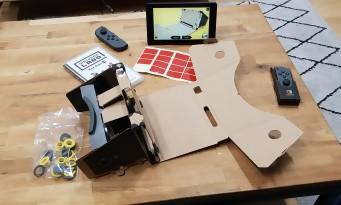 Really, we took none, but then no pleasure in immersing ourselves in the world of Hyrule with such pronounced technical deficiencies. If the camera is fixed by default, you can activate the gyroscope to gain freedom of movement; It's worse. In fact, instead of benefiting from a more flexible field of vision, the objective remains focused on Link around which we turn whatever the direction in which we look. It makes sense in the sense that you never lose sight of character, but it turns your stomach as well as killing your brain. The Legend of Zelda: Breath of the Wild reminds Nintendo of how far it still has to go to deliver ambitious virtual reality games. In the current state of things, it is better to spend time on the application delivered in the pack and create your own interactions through the Workshop.
Really, we took none, but then no pleasure in immersing ourselves in the world of Hyrule with such pronounced technical deficiencies. If the camera is fixed by default, you can activate the gyroscope to gain freedom of movement; It's worse. In fact, instead of benefiting from a more flexible field of vision, the objective remains focused on Link around which we turn whatever the direction in which we look. It makes sense in the sense that you never lose sight of character, but it turns your stomach as well as killing your brain. The Legend of Zelda: Breath of the Wild reminds Nintendo of how far it still has to go to deliver ambitious virtual reality games. In the current state of things, it is better to spend time on the application delivered in the pack and create your own interactions through the Workshop.


























